Polyurethane is a polymer commonly used to coat surfaces to protect them from wear and tear. It is often applied to wood, metal, and concrete surfaces to provide a durable and long-lasting finish. Polyurethane is an excellent option for protecting your surfaces but it can be challenging to clean.
This guide will cover everything you need to know about cleaning polyurethane surfaces, including the best methods and products.
What can I use to clean polyurethane?
First, it’s essential to understand that different types of polyurethane require distinct cleaning methods. There are two main types of polyurethane: oil-based and water-based. Oil-based polyurethane is older and is made from a combination of oil and polyurethane resins. On the other hand, water-based polyurethane is made from various water and polyurethane resins. Both types of polyurethane are durable and long-lasting, but they require different cleaning methods.
Cleaning Oil-Based Polyurethane
Oil-based polyurethane is known for its warm, amber color and ability to highlight the wood’s natural grain. It is a popular choice for furniture and flooring, but water-based polyurethane is more challenging to clean. Here are some tips for cleaning oil-based polyurethane:
- Use a mild detergent and water: Mix a small amount of mild detergent with warm water in a bucket. Dip a soft cloth or sponge into the solution and gently scrub the surface. Be sure to wring out the material or sponge before wiping the surface to avoid excess water.
- Avoid abrasive cleaners: Abrasive cleaners can scratch the surface of the polyurethane and dull its shine. Instead, opt for a mild detergent, or a specialized cleaner explicitly made for oil-based polyurethane.
- Wipe dry: After scrubbing the surface, wipe it dry with a clean, dry cloth. This will help prevent water spots and streaks from forming.
- Use a furniture polish: To give your oil-based polyurethane a nice shine, consider using a furniture polish. Apply a small amount of polish to a soft cloth and wipe it over the surface in a circular motion. This will help restore the shine and protect the surface from dirt and grime.
Cleaning Water-Based Polyurethane
Water-based polyurethane is a newer type of polyurethane that has gained popularity recently due to its quick drying time and low toxicity. It is a clear finish often used on wood flooring, cabinetry, and furniture. Here are some tips for cleaning water-based polyurethane:
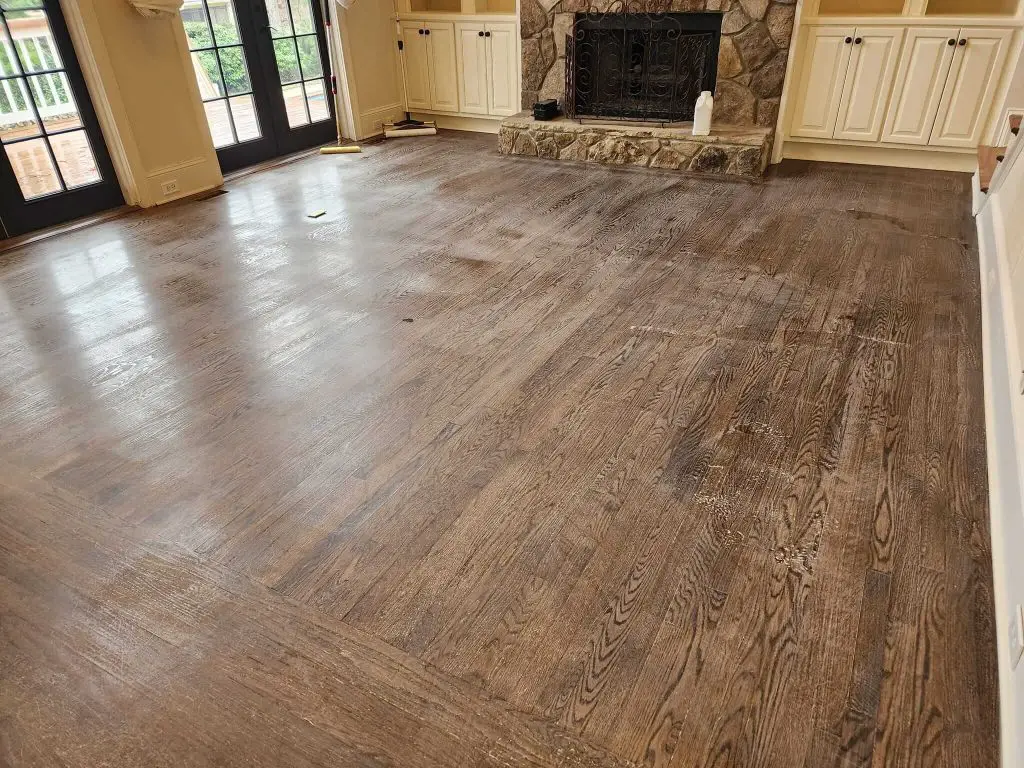
- Use a mild detergent and water: Mix a small amount of mild detergent with warm water in a bucket. Dip a soft cloth or sponge into the solution and gently scrub the surface. Be sure to wring out the material or sponge before wiping the surface to avoid excess water.
- Avoid abrasive cleaners: Abrasive cleaners can scratch the surface of the polyurethane and dull its shine. Instead, opt for a mild detergent, or a specialized cleaner explicitly made for oil-based polyurethane.
- Wipe dry: After scrubbing the surface, wipe it dry with a clean, dry cloth. This will help prevent water spots and streaks from forming.
- Use a furniture polish: To give your oil-based polyurethane a nice shine, consider using a furniture polish. Apply a small amount of polish to a soft cloth and wipe it over the surface in a circular motion. This will help restore the shine and protect the surface from dirt and grime.
Removing Stains from Polyurethane Surfaces
Accidents happen, and you’ll inevitably encounter stains on your polyurethane surfaces at some point. The key to removing stains is to act quickly and use the right products. Here are some tips for removing common types of colors from polyurethane surfaces:
Grease and oil stains:
For grease and oil stains, start by blotting the stain with a clean, dry cloth to absorb as much grease or oil as possible. Then, apply a small amount of dish soap to the stain and gently scrub it with a soft cloth or sponge. Rinse the surface with warm water and wipe it dry.
Ink stains:
Ink stains can be tricky to remove, but it’s not impossible. Start by blotting the stain with a clean, dry cloth to absorb as much ink as possible. Then, try using a small amount of rubbing alcohol or hair spray (either one should work) on a cotton swab to scrub the stain gently. Rinse the surface with warm water and wipe it dry.
Red wine stains:
Red wine stains can be a nightmare to remove, but there are a few steps you can take to minimize the damage. First, blot the stain with a clean, dry cloth to absorb as much of the wine as possible. Then, mix white vinegar and water in a small bowl and apply it to the stain with a soft cloth or sponge. Gently scrub the stain, rinse the surface with warm water, and wipe it dry.
Blood stains:
Blood stains can be difficult to remove, but acting quickly before the stain can set is essential. Start by blotting the stain with a clean, dry cloth to absorb as much blood as possible. Then, mix water and hydrogen peroxide in a small bowl and apply them to the stain with a soft cloth or sponge. Gently scrub the stain, rinse the surface with warm water, and wipe it dry.
Water stains:
These are the most common dirt particles that harm your polyurethane wood surface. It could be an eyesore that will make you second guess whether the wood piece has a stain.
To safely remove a water stain;
- Use baking soda. Mix one tablespoon of baking soda with one table of water to form a paste.
- Gently rub the water stain until it is removed using a clean cloth or rag. Do not rub roughly to avoid making a permanent mark on the surface.
- Use vinegar. To remove a water stain, add olive oil to a small portion of vinegar.
- After mixing the oil and vinegar, apply a clean cloth to the stain. Use a small circular motion to wipe the stain until it is gone.
- Use petroleum jelly. Before bed, place a small amount of petroleum jelly on the water ring on the wood. Allow it to sit overnight and wipe it clean in the morning to get a refreshed spot on the wood surface, making it appear new.
- Non-gel toothpaste. Add a small amount of non-gel toothpaste to a clean cloth. Gently wipe the watermark using a circular motion until it’s gone.
Tips for Maintaining Polyurethane Surfaces
Cleaning and maintaining your polyurethane surfaces is essential to keeping them looking their best. Here are a few tips to help you maintain your polyurethane surfaces:
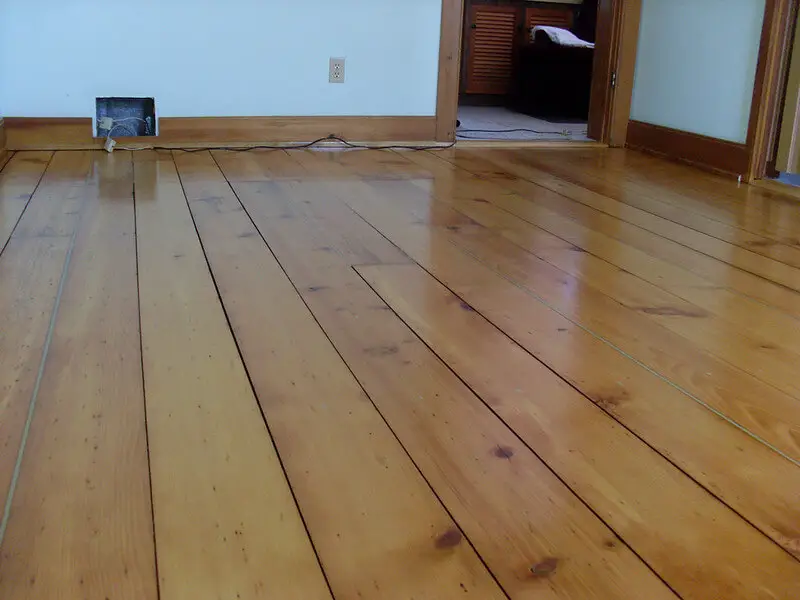
- Dust regularly: Dust and dirt can build up on your polyurethane surfaces over time, causing them to look dull and lifeless. To prevent this, dust your surfaces regularly using a soft cloth or a feather duster.
- Use coasters and placemats: Be sure to use coasters and placemats whenever possible to prevent water rings and stains from forming on your polyurethane surfaces. This will help protect the surface from spills and other accidental damage.
- Avoid placing hot items directly on the surface: Polyurethane is resistant to heat but is not entirely immune to it. Avoid placing hot items directly on the surface to prevent damage to your polyurethane surfaces. This includes pots and pans, coffee mugs, and other hot objects.
- Protect the surface from moisture: Water can damage polyurethane surfaces, especially if left to sit for an extended period. To prevent moisture damage, wipe up any spills as soon as they occur and avoid leaving damp items on the surface.
- Use protective pads: If you have furniture with polyurethane surfaces, consider using protective pads to prevent scratches and dents. These pads are typically made from felt or rubber and can be placed on the bottom of furniture legs to prevent them from coming into contact with the floor.
Cleaning specific polyurethane surfaces
Cleaning Polyurethane Floors
Polyurethane floors are durable and long-lasting but require regular cleaning to maintain shine and luster. Here are some tips for cleaning polyurethane floors, along with the tools and products you’ll need:
Tools:
- Mop or broom
- Soft cloth or sponge
- Vacuum cleaner
Products:
- Mild detergent
- Water
- Furniture polish (optional)
Instructions:
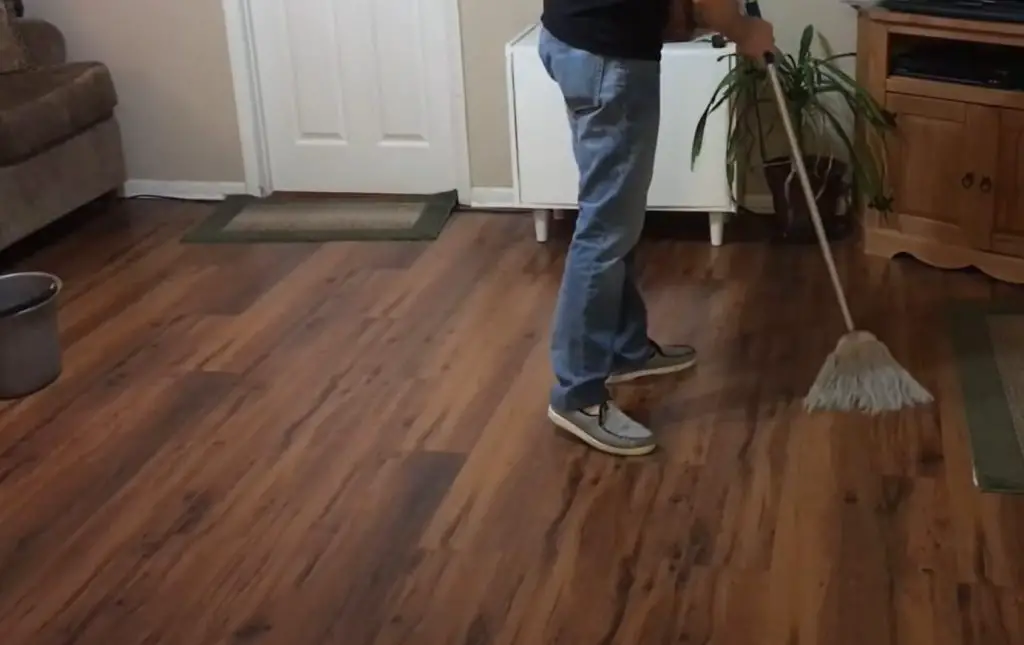
- Start by sweeping or vacuuming the floor to remove any dirt and debris. This will make it easier to clean and help prevent scratches.
- Next, mix a small amount of mild detergent with warm water in a bucket. Dip a mop, soft cloth, or sponge into the solution and gently scrub the floor. Wash the mop or cloth before wiping the surface to avoid excess water.
- Once you’ve finished scrubbing the floor, wipe it dry with a clean, dry cloth. This will help prevent water spots and streaks from forming.
- If you want to give your polyurethane floor a nice shine, consider using a furniture polish. Apply a slight polish to a soft cloth and wipe it over the surface in a circular motion. This will help restore the shine and protect the surface from dirt and grime.
Cleaning Polyurethane Tables, Countertops, and Bartops
Polyurethane tables, countertops, and bartops can be prone to stains and scratches, so cleaning them properly is essential to maintain their appearance. Here are some tips for cleaning these surfaces, along with the tools and products you’ll need:
Tools:
- Soft cloth or sponge
- A toothbrush or scrub brush
Products:
- Mild detergent
- Water
- Furniture polish (optional)
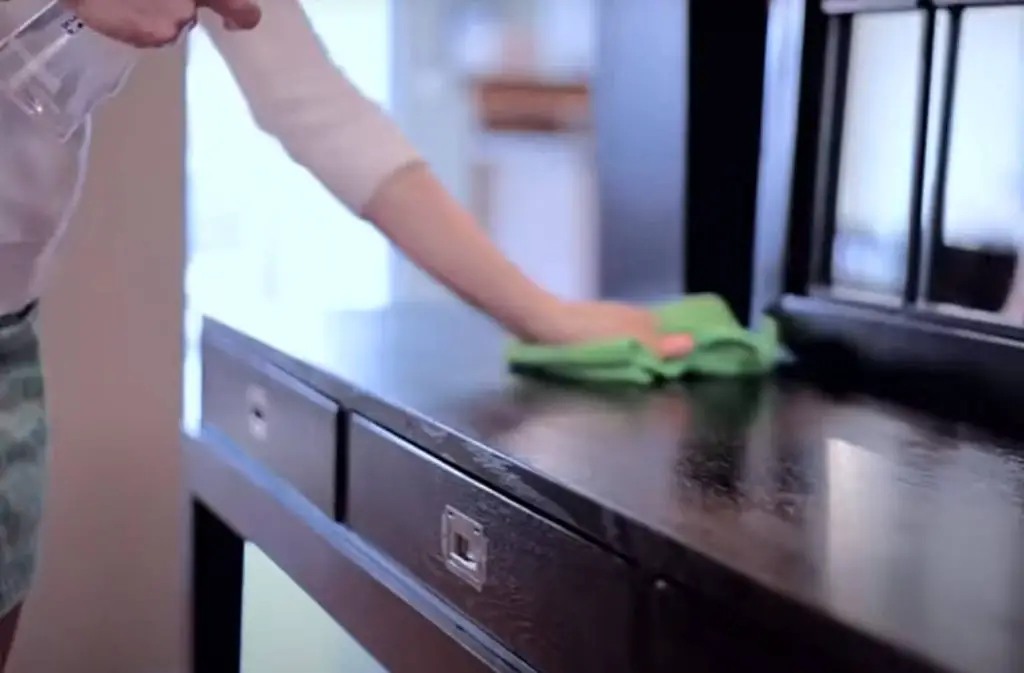
Instructions:
- Start by wiping the surface with a soft cloth or sponge to remove any dirt and debris.
- Next, mix a small amount of mild detergent with warm water in a bowl. Dip a cloth or sponge into the solution and gently scrub the surface. You may need to use a toothbrush or scrub brush for tougher stains to get the job done.
- Once you’ve finished scrubbing the surface, wipe it dry with a clean, dry cloth. This will help prevent water spots and streaks from forming.
- Use a furniture polish to give your polyurethane table, countertop, or bartop a nice shine. Simply apply a small polish to a soft cloth and wipe it over the surface in a circular motion. This will help restore the shine and protect the surface from dirt and grime.
Cleaning Polyurethane Furniture
Polyurethane furniture is durable and long-lasting, but it does require regular cleaning to maintain its appearance. Here are some tips for cleaning polyurethane furniture, along with the tools and products you’ll need:
Tools:
- Soft cloth or sponge
- Toothbrush or scrub brush
Products:
- Mild detergent
- Water
- Furniture polish (optional)
Instructions:
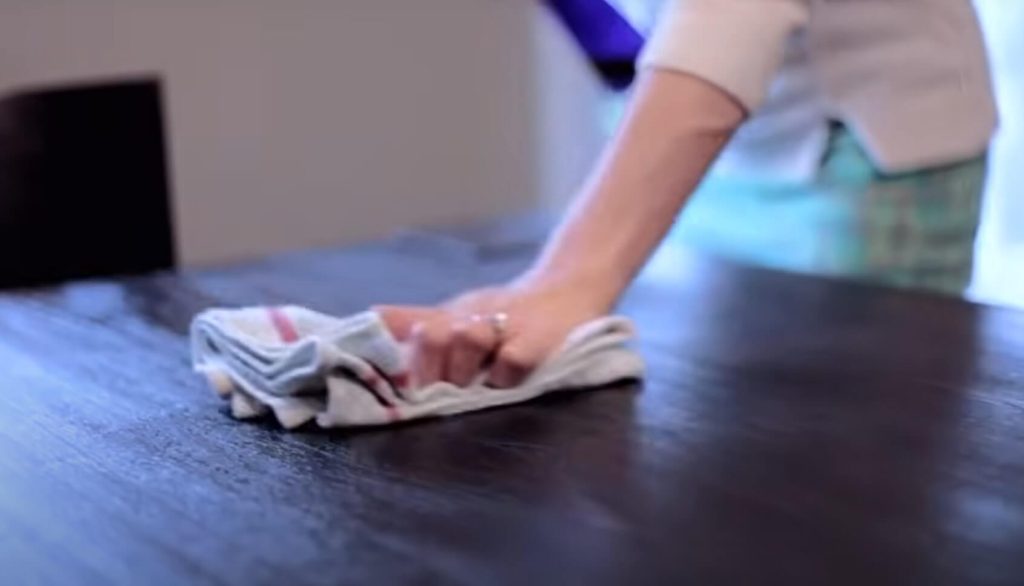
- Start by wiping the surface with a soft cloth or sponge to remove any dirt and debris.
- Next, mix a small amount of mild detergent with warm water in a bowl. Dip a cloth or sponge into the solution and gently scrub the surface. You may need to use a toothbrush or scrub brush for tougher stains to get the job done. Be sure to pay extra attention to any crevices or hard-to-reach areas, as these can be prone to collecting dirt and grime.
- Once you’ve finished scrubbing the surface, wipe it dry with a clean, dry cloth. This will help prevent water spots and streaks from forming.
- If you want to give your polyurethane furniture a nice shine, consider using a furniture polish. Apply a small polish to a soft cloth and wipe it over the surface in a circular motion. This will help restore the shine and protect the surface from dirt and grime.
- Don’t forget to dust your furniture regularly to keep it looking clean and polished. Use a soft cloth or feather duster to remove dust and debris from the surface, paying particular attention to any crevices or hard-to-reach areas.
The Don’t’s of Cleaning Polyurethane Surfaces
Polyurethane is a durable and long-lasting material that can be damaged if improperly cleaned. Here are some things to avoid when cleaning polyurethane surfaces:
- Don’t use abrasive cleaners: Abrasive cleaners can scratch the surface of the polyurethane and dull its shine. Instead, opt for a mild detergent, or a specialized cleaner explicitly made for polyurethane.
- Don’t use wax: While wax may be effective at protecting and shining other surfaces, it is not recommended for use on polyurethane. The wax can create a barrier that prevents the polyurethane from adhering correctly, causing it to peel or flake over time.
- Don’t use harsh chemicals: Some chemicals, such as bleach or ammonia, can damage polyurethane surfaces. These chemicals can strip the finish and cause discoloration or fading. Stick to mild detergents and specialized cleaners to avoid damaging your polyurethane surfaces.
- Don’t use excessive water: Water can damage polyurethane surfaces, especially if it is left to sit for an extended period. Be sure to wring out your mop or cloth before wiping the surface to avoid excess water, and wipe the surface dry with a clean cloth afterward.
- Don’t place hot items directly on the surface: Polyurethane is resistant to heat but is not entirely immune to it. Avoid placing hot items directly on the surface to prevent damage to your polyurethane surfaces. This includes pots and pans, coffee mugs, and other desirable objects.
FAQs of Cleaning Polyurethane Surfaces
Here are some common questions and answers about cleaning polyurethane surfaces:
Can I use water to clean polyurethane surfaces?
Yes, water can clean polyurethane surfaces, but it is essential to use it sparingly. Excessive moisture can damage the surface, causing it to warp or peel. Instead, use a mild detergent mixed with a small amount of water to clean your polyurethane surfaces.
Can I use mineral spirits to clean polyurethane surfaces?
Mineral spirits can effectively remove dirt and grime from polyurethane surfaces, but they can also strip the finish if used excessively. If you use mineral spirits, use it sparingly and follow up with furniture polish to protect the surface.
Can I use vinegar to clean polyurethane surfaces?
Vinegar can effectively remove dirt and grime from polyurethane surfaces but can also strip the finish if used excessively. If you use vinegar, dilute it with water and use it sparingly. Follow up with furniture polish to protect the surface.
Can I use lemon oil to clean polyurethane surfaces?
Lemon oil can effectively remove dirt and grime from polyurethane surfaces and add a nice shine, but it can also build up over time, causing the surface to become sticky. If you use lemon oil, use it sparingly and follow up with furniture polish to protect the surface.
Can I use furniture polish to clean polyurethane surfaces?
Furniture polish can effectively remove dirt and grime from polyurethane surfaces and add a nice shine, but it should not be used as a sole cleaning agent. Instead, use it with a mild detergent and water to clean your polyurethane surfaces. This will ensure that the surface is thoroughly cleaned and protected.
Conclusion.
In conclusion, cleaning and maintaining polyurethane surfaces can be challenging, but it is well worth the effort. Following the proper cleaning methods and using the right products, you can keep your polyurethane surfaces looking clean and polished for years. Whether you’re dealing with oil-based or water-based polyurethane, the key is to use the proper cleaning methods and products to ensure that you don’t damage the surface. With some care and attention, your polyurethane surfaces will remain beautiful and durable for years.

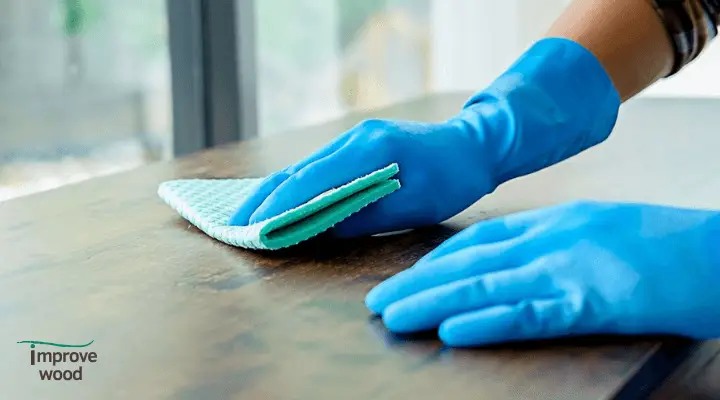
I did something dumb. I sprayed bug stray around my sink because there were many ants. I cleaned it quickly, but I think I damaged my polyurethane butcher counters. What should I do?
Bug spray can damage polyurethane finishes. If you accidentally sprayed bug spray on your polyurethane butcher counters, you can try to repair the damage by cleaning the area with a mild soap and water solution. If the damage is minor, you may be able to simply buff the area with a soft cloth. However, if the damage is more severe, you may need to repair with a coat of polyurethane on the area.